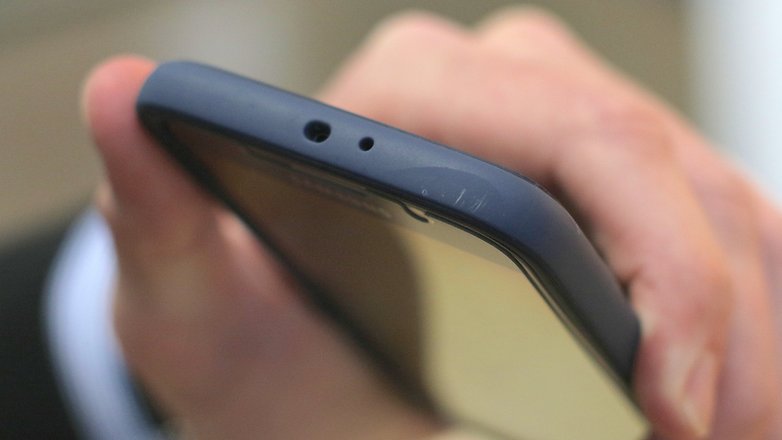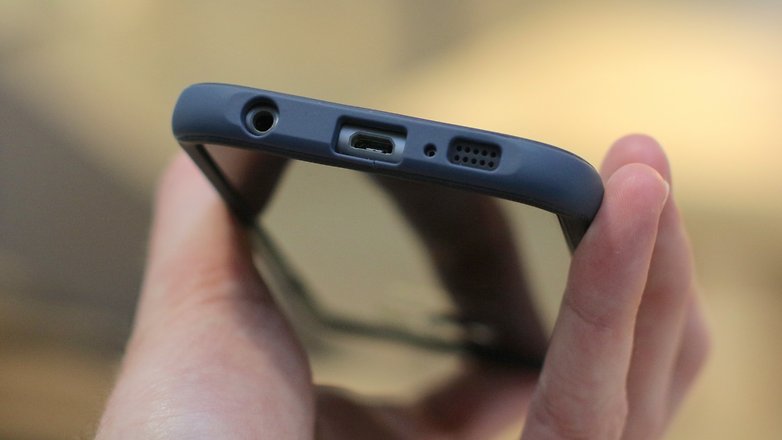Galaxy S6 drop test: how easily does it break?


From which height can you drop the Galaxy S6 before it breaks? I wanted to know this since Samsung switched the design of its flagship from bendable plastic to breakable glass. Then my chance came – via post. Evolutive Labs, the manufacturer of the RhinoShield Crash Guard, sent me a Galaxy S6 wrapped in its sturdy bumper case for one purpose. To try to smash it.

Here's what we did. We performed a drop test at our office, measuring drops from several heights to push this bumper case to the limit. The first drop was from pocket height, the second from 6.5 feet (2 m), the third from 11.5 feet (3.5 m) and the last was from 16.4 feet (5 m). I didn't stop the test until the Galaxy S6 broke.
Watch the video below to see what happened.
So did the S6 smash to pieces? Not so much. The RhinoShield Crash Guard is a tough little case, able to withstand impact of drops all the way up to Evolutive Labs' claim of 11.5 feet. But how can you drop a phone from that height without breaking it? I wasn't satisfied. So I pushed the case beyond this limit with a drop from more than 16 feet.

From this height the phone thudded heavily and bounced. I was sure it would be damaged after that. But then I picked it up and couldn't find a scratch on the phone. But switching on the display revealed that there was, in fact, serious damage to the Galaxy S6.

As you can see in the image above, the display was busted on the corner which hit the floor. The bumper case absorbed the impact, saving the S6's fragile frame, but the phone's internals couldn't handle the force. Something had to give, and it did. So be warned – this bumper case is tough, but not invincible.
So if you have a Galaxy S6 and you're a bit clumsy, or that delicate glass makes you nervous, then the RhinoShield Crash Guard could be for you. At US$24.99 for the case, or bundled with screen protectors for US$49.99, that's a pretty smashing deal.




















If you want to let us know how best to protect our phones as you claim in your comments. Try doing drop test like this one in several different protective cases. That is an article I would like to see. I would use some sort of releasing device to make sure the drop angle was the same every time.
Indeed, that would be the article I would like to see as well.
Seriously, I think it's an issue with the title. The title made me think that the S6 was going through a drop test, not a drop test in a case. Whether or not anyone was paid in money or product is not the issue. The issue is the article played out more as an ad for this case and not the S6 itself.
Well, I really do not care to be an ad, it gives the opportunity to know a good product to protect a good smartphone. Thanks Omar Hamwi!
Some of the people in this commenting section need to RELAX. Omar was not paid to write this article from this company. He was just simply provided one. If he gave a negative review of the case, would it still be considered sponsored? No. But give any inkling that he liked it, then everyone thinks its sponsored. Again, relax people.
Got one better than your Rhino case. My husband dropped a note 4 from 24 feet with an Otter Box defender case & no breakage at all.
I have a Samsung Galaxy S6 and put an Incipio Double Layer case on the device - it's phenomenal. Personally, I am a big clutz and accidentally drop my phone daily (sometimes more than once). This happened to be the first phone I purchased a case for, this device is slippery, and within minutes of leaving store I dropped it (thankfully no damage). I've had the cover on for 6 months now and have several scuff marks on the corners but that's about it. The highest it has fallen was about 10 ft and once it was thrown on to a paved driveway about 17 ft with only a slight scuff. I'm happy to say the display & internal components still work beautifully.
To Mr. Omar Hamwi: I read your comments on this article and you saying this is not an add or not sponsored is just a play on words; getting something for free to use and promote in any way is a basic definition of sponsorship (further discussion on this, as in "they didn't pay us" or "we were not instructed what to post in the article"... well, think about that a bit and you'll notice the wrong in your thinking; the article still gives them a promotion, making it an add, either way). But, I am not against these kind of articles, in fact I welcome them, so keep them up, it's fine with me, but like others pointed out, you should specify in the title what exactly is tested, and not give these vague statements to lure people into reading them.
That being said, I disagree a bit with one of your final statements, specifically: "So be warned – this bumper case is tough, but not invincible." Well, inside the limits of the specifications, it was invincible, as proven by you. And even more, it didn't give in even outside of its specifications. The phone itself did, but that could be a fault or a limit of the phone's construction, then again you could argue that phones are not made for dropping around. A little bit of carefulness with your investment goes a long way.
On a more personal note, although that case in nice and strong, I like my phones as my women, as naked as possible :)
Hey Bojan, sponsorship and advertising are both paid for, and this article was not paid for. We have clear editorial guidelines surrounding paid content and we are transparent about them. Manufacturers send us phones and tablets for review, just as I reviewed the bumper case in this article. That content is not sponsored either.
Reviewing products is central to what we do at AndroidPIT - to help our readers make informed purchasing decisions. Check out our editorial guidelines if you'd like more info: https://www.androidpit.com/terms/editorial-guidelines
Thank you for the answer, appreciate it. You were paid for the article by providing you the free phone and cover for the test and that way indirectly (or even directly) asking for the review and therefore promotion. Who says you need to be paid in money? That document you linked? Consequently, the provider of resources can ask for bias during testing, and or course, you can refuse, but the readers have no way of knowing for sure. What all of us come here for, is possibly reliant information and it seems to be so consistently (this article as well, in my humble opinion). But any time you get a device or anything for a test is a sponsorship, period. You may call it whatever you want though, if you are not paying from your pocket it's a sponsorship.
And all this being said in no way exempts you from false advertising your article on the net. No one would have bothered with all this, if you made the title right.
Hey Bojan, I hear what you're saying but it's important to acknowledge that all tech sites - ours and all others like ours - are sent devices, accessories and peripherals all the time. If you want to call that sponsorship then I guess you can, but that means every tech site is "sponsored" in the exact same way. The decision to write about something or not is up to us as editors, not to the fact that someone sent us something. We get sent all kinds of stuff that never makes it to the internet.
You expect him to break a $650 phone he paid for? Try a cup of coffee
Some people do that, and it shouldn't be his phone, AndroidPit can pay for it. Anyway, he wanted to discuss further the topic of sponsorship, so there. You all people are like having hard time understanding what I'm saying, I don't know why, shouldn't be that hard. How about, try some common sense and intelligence?
Hey Kris, I understand that and that is a sponsorship, whatever you call it. They give you phone for free, for you to do a review and therefore promote them and their product. There, easy.
My main qualm, and for some other people it seems, it's not being sponsored or whatever, it's the article itself, or better said the title. It should state clearly what's it about and not be misleading. It's just bad journalism.
It may not have been a sponsored article, but it was still pretty ad like. Try dropping that all glass phone from 16 feet with out a case and you will be picking it up with broom. I personally like Otter box cases they have proven to be my 3 year old daughter proof. Who has tossed it across the room when she is mad at whatever app she was playing.
Hey Mark - yes of course - everyone has their own preference for bumper cases. Our test was pretty straightforward. Evolutive Labs told us their case was tough, so I tested it. They gave us the case and an S6. I dropped them a few times, then published the results in this article for our readers to see how it stacked up. The phone and case have now been sent back to Evolutive Labs. We ran this test to help you guys make a decision on how to protect your phones. I hope you'll agree that we fulfilled this aim.
Cheers,
Omar
Your test was straight forward but your title for the article was not. I have to agree with Bojan M that had you put drop test of the S6 in a RhinoShield Crash Guard Case, I would not have read the article. At least would have never commented on it. To me it seems you made the title was misleading to get more people to click on it, and as you said they sent you the phone and case to do a test for them.
I use a Spigen Tough Armor case on my edge, got if for 32.99AU on ebay from an authorized seller.
How do you like using a case on the Edge? Does it affect the use or feel of it at all? I'm generally not a case fan, but the new Galaxies are slippery little buggers and the back is a fingerprint nightmare (depending what color you picked).
No I find it is great to use, only makes it heavier.